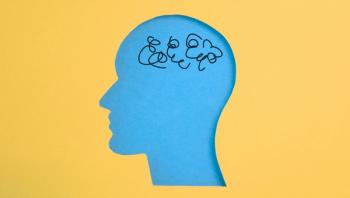
- Vol 39, Issue 1
Advances in Treatments for ADHD
What treatments were recently approved by the US Food and Drug Administration for pediatric patients with ADHD?
FROM THE REACH INSTITUTE
Treatments recently approved by the US Food and Drug Administration (FDA) for pediatric patients with attention-deficit/hyperactivity disorder (ADHD) include 2 medications that address some of the common issues associated with standard stimulant treatments. Another development is use of devices to manage ADHD symptoms (
Delayed-Release Stimulant
Methylphenidate hydrochloride (Jornay PM), a delayed-release/extended-release methylphenidate, was approved by the FDA in 2018 and became commercially available in 2019. It differs from the other methylphenidate-based stimulants in that it is administered before bedtime—between 6:30 pm and 9:30 pm—to take effect in the morning when the child rises.
This delayed action addresses a common problem many families face when stimulants are administered upon rising: Patients are focused and ready to work by the time school starts, but
Nonstimulant Medication
In April 2021, the FDA approved viloxazine (Qelbree) for treatment of ADHD in patients aged 6 to 17 years.3 Like atomoxetine hydrochloride (Strattera), Qelbree is a selective norepinephrine reuptake inhibitor (SNRI). These drugs join the alpha-2 agonists (eg, clonidine hydrochloride extended-release [Kapvay], guanfacine extended-release [Intuniv]) as options for families who do not feel comfortable giving children Schedule II stimulants or for patients for whom
Like other SNRIs used to treat depression, Qelbree and Strattera carry black-box warnings about an increase in
Devices and Digital Therapeutics
The FDA has also recently approved 2 devices for treatment of ADHD in children. Clinicians should note that the standard for FDA approval is lower for devices than for drugs. Although drugs must prove both safety and efficacy, devices need only prove safety.
The first device is the Monarch external Trigeminal Nerve Stimulation (eTNS) System, a trigeminal nerve stimulator. Unlike the vagal nerve stimulator used to control epileptic seizures, this therapy does not require surgical insertion. The trigeminal nerve stimulator sits on the face. A small-scale study using data from the device manufacturer suggests that about half of
In the digital therapeutics category, the FDA has also approved use of a video game called EndeavorRx to treat ADHD. The sensory stimulus and motor challenges of the game target the neural pathways that govern focus and attention. Studies sponsored by the device’s manufacturer suggest that the prescribed use of the game improves attention and has few adverse effects.7
Either or both of these devices may prove to be valuable adjuncts to medication and behavior management. More evidence of effectiveness would be helpful in guiding clinical decisions.
Side Benefits of the Pandemic
One of the most important developments in ADHD treatment is not a device or medication, but the rise of telemedicine. Early in the COVID-19 pandemic, most large private insurance companies and the Centers for Medicare & Medicaid Services (CMS) waived the requirement that patients be seen in person—even when those patients are being started on Schedule II stimulants.
Another odd benefit of the pandemic is that many
Dr Greenhill is a practicing child and adolescent psychiatrist in the San Francisco Bay area. As a member of the faculty of
References
1. López FA, Faraone SV, Newcorn JH, et al.
2. Gomeni R, Komolova M, Incledon B, Faraone SV.
3. D’Arrigo T. FDA approves Qelbree for ADHD. News release. American Psychiatric Association; May 20, 2021. Accessed November 20, 2021.
4. Cuffe SP.
5. Treuer T, Gau SS-F, Méndez L, et al.
6. Loo SK, Salgari GC, Ellis A, et al.
7. Kollins SH, DeLoss DJ, Cañadas E, et al.
Articles in this issue
almost 4 years ago
Pharmacological Management of Treatment-Resistant Anorexia Nervosaalmost 4 years ago
Treatment-Resistant OCD: Strategies and Novel Treatment Optionsalmost 4 years ago
The Current State of the Art and the Not Too Distant Futurealmost 4 years ago
5 Crypto Investing Rules for Busy Doctorsalmost 4 years ago
What Can Philosophy Learn From Madness?almost 4 years ago
Tender Fencesalmost 4 years ago
Doorknob Moments: Why They Happen and How to Use Themalmost 4 years ago
Chatbots for Child Mental Health Care: Helpful, but LimitedNewsletter
Receive trusted psychiatric news, expert analysis, and clinical insights — subscribe today to support your practice and your patients.

















